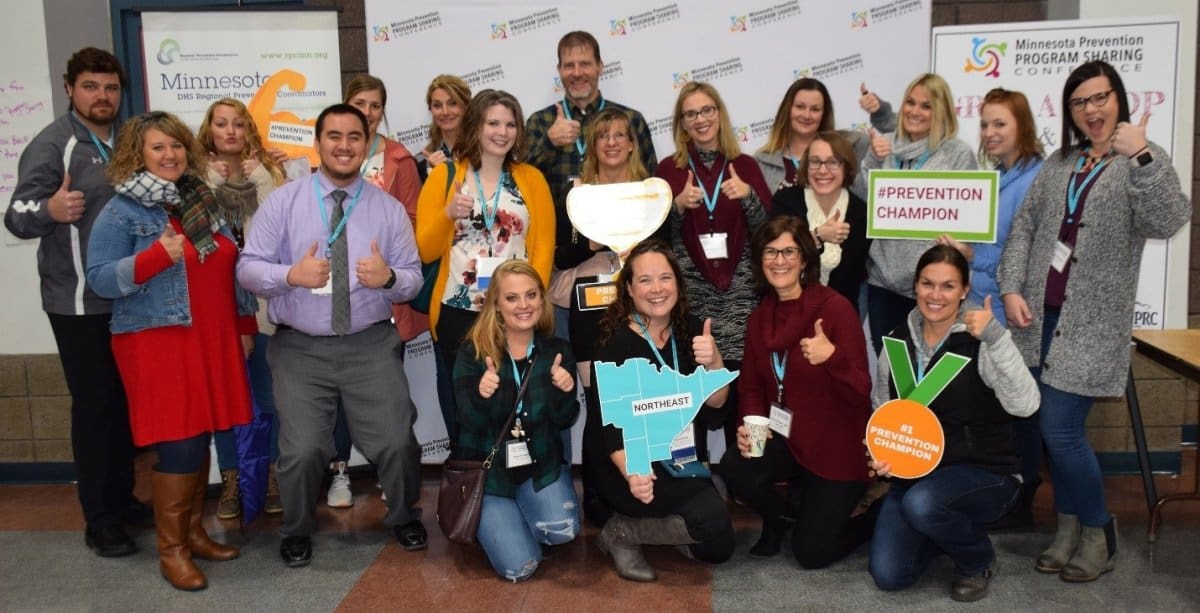
Tell me about your community and the communities that your coalition serves – its population and unique features. When was the coalition formed?
Located in Itasca County, Minnesota, the Grand Rapids In Prevention (GRIP) Coalition was established in 2016 to serve the community and Independent School District 318. Though a five-year Planning and Implementation grant from the Minnesota Department of Human Services Behavioral Health Division, GRIP has been implementing strategies to reduce and delay underage alcohol use. Grand Rapids is home to just over 10,000 people, but is surrounded by vibrant rural populations. Located on the west end of the Iron Range, our community has a unique economy – rooted in mining and a paper mill. These industries have proven to ebb and flow over the years and have provided folks with as many economic challenges as opportunities.
What unique issues is your coalition facing?
“There is so much good happening already in the Grand Rapids community – yet we recognize that we have so many ways that we need to improve,” said the coalition’s Grant Coordinator Nick Adams.
“The Iron Range, like many places in the U.S., has a somewhat historical love affair with alcohol. People are very protective of their booze. While GRIP Coalition is only focused on reducing and delaying underage use – something nearly everyone can get behind – many adults have been hesitant to support the effort. We’ve seen very interesting push back from corners we’d never imagine. While everything we do and each message we produce is rooted in scientific data, there’s a strong contingency of people who claim our efforts are ‘fake news,’ and that’s somehow become an acceptable answer.”
What activity or program is your coalition most proud of and/or what activity would you like us to spotlight?
“GRIP Coalition utilizes a framework called the Science of the Positive from the Montana Institute,” said Adams. “This framework has helped our coalition change the way we message to students and community members using Positive Community Norms. Rather than working out of a traditional deficit model, we now promote health in order to grow health. The simplest way to think about this is through Hope and Concern.”
“GRIP Coalition was formed to address a Concern: Underage students in our schools are using alcohol at a rate higher than the state and national averages. In working with a deficit model – we would have said something to the effect of, ‘Look at how bad this is, we have all of these kids using alcohol. We’re even worse than the rest of the state. This is a problem and we need to change it!’ or, ‘The percentage of kids drinking is still over 20%. That’s bad and we need that number to come down,’” said Adams.
“When GRIP discovered the Science of the Positive and Positive Community Norms, we learned to see the other side of the coin. Hidden in the Concerning data was actually a lot of Hope. While over 20% of students were using alcohol, that meant that over 70% of students weren’t. Dr. Linkenbach of the Montana Institute showed us that if you want health, you need to promote health. So rather than promoting the kids who were using, we started promoting the kids who aren’t using.”
“The difference for GRIP has come in the balancing of Hope and Concern. The whole context of our messaging and the spirit of our campaign has shifted.”
How did you get there, and what are your outcomes? (Be as specific as possible in terms of strategies that you used)
“Through our first student survey, GRIP Coalition identified a massive gap between the number of students who were using alcohol, to the number of students who thought others were using alcohol,” said Adams. “This perception gap, among others, is what GRIP has been tirelessly working to correct. GRIP learned through the Montana Institute that perceptions become behaviors – so shrinking the perception gap will lead to growing the positive that already exists.”
“Specific strategies include in-school curriculum, positive community norms messaging throughout the school and community, active student leadership groups in the schools, leadership training (for both coalition members and students), responsible beverage server training, alcohol compliance checks, and other community-specific events.”
What advice would you give to other coalitions that may be addressing some of the same issues?
“Patience is key,” said Adams. “The changes we seek aren’t going to happen overnight or even in a number of years. If our work were easy, it would be done by now. Community transformation is slow moving, but we must always go back to why we do what do. You can’t lose sight of that.”
Will you be attending the 2019 Mid-Year Training Institute and, if so, what lessons do you hope to take back to your coalition from the event?
“A GRIP member and I will be attending the Mid-Year in Dallas,” said Adams. “One thing that I’ve learned in my previous visits to the Mid-Year is to keep an empty cup. There are so many different sessions and tracks available to attendees – everyone can come home with valuable knowledge, strategies, techniques and energy. Whatever your coalition needs will be there. Whatever you need as a prevention professional will be there. You’ve just got to make a solid plan with an open mind upon check-in, and CADCA will do the rest.”


